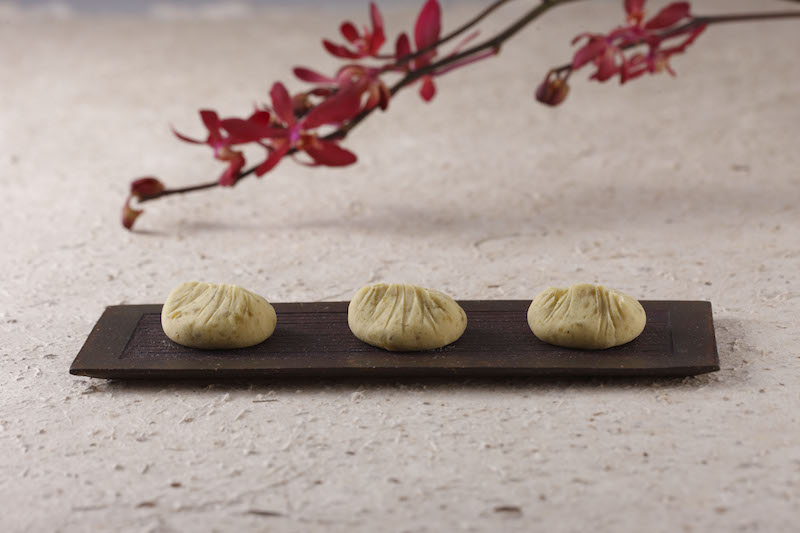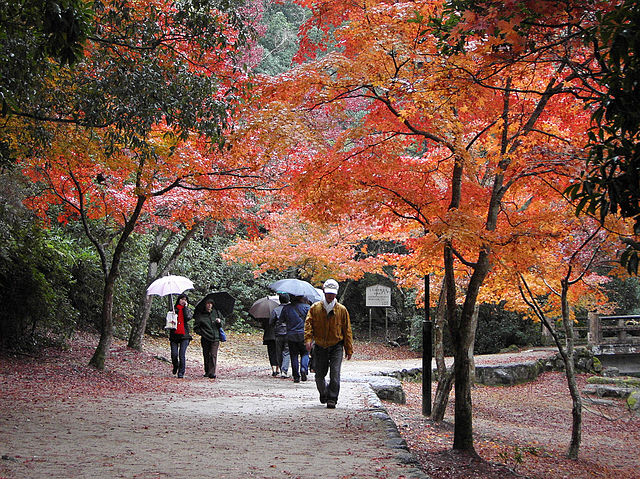Sep 28, 2021
Autumn Food in Nagoya
Ask any Japanese what their favorite season is (there are four seasons in Japan, as you may have heard), and there is a strong chance that they will tell you that it’s autumn because the weather is beautiful once the typhoons have passed, and the food. Unlike in the UK and the US, where you can get pretty much everything at all times of the year, in Japan, they put a considerable onus on seasonal goods, and each autumn, there is much excitement from people seeking out where to get the best grub.
Luckily for you, JIS is here to fill you in on the best fall foods and where to get them.
Kuri Kinton 栗きんとん
For Brits like me, kuri [chestnuts] conjure up either potentially finger-breaking games of conkers or roasting them over braziers in winter, but for the Japanese, kuri is an autumn food, especially in sweets. Kuri kinton, meaning chestnut gold mash but essentially candied chestnuts, is a mixture of chestnut and Japanese sweet potato and symbolizes wealth and prosperity.

Ena in southern Gifu and its surrounds is known throughout Japan as the city of chestnuts, making it the ideal place to get the best kuri kinton. There are, of course, loads of places to get it in the area, but perhaps the best is Ena Suya Honten, where as well as kuri kinton, they make a wide array of chestnut sweets.
Where: 231-13 Oicho, Ena, Gifu 509-7201 (map)
Website: suya.co.jp
Matsutake mushroom 松茸
One autumn, my wife and I went to a pretty fancy restaurant in Kyoto. About halfway through lunch, she asked me what I had thought of the mushroom. ‘Mushroomy’ was my shrugged response. She was aghast. ‘That was Matsutake mushroom!’ she exclaimed. ‘It’s the most expensive dish on the menu!’ Well, I never did claim to be anything other than a philistine when it came to food.

Due to this fragrant smell and pungent taste, Matsutake is perhaps the daddy of Japan’s autumn foods and, as we cannot farm it artificially, it is one of the most exclusive, and thus cost a bomb (just one mushroom in the above photo comes in at 475 USD). But it is worth the cost for those with more cultivated tastebuds than mine, notably served in flavored rice or in a soup called Matsutake dobin mushi. You can find Matsutake in a few high-end restaurants, and Otobashi Sumiya is one of the best. Sumiya prides itself on locally sourced seasonal foods. Lunch prices range from 6,500 JPY, while dinner starts at 12,000 JPY. As menus change daily, call ahead to make sure Matsutake is available.
Where: Nagoya, Nakagawa Ward, Otobashi, 1 Chome-1-35 City Corp. Otobashi Building No. 5 Building No. 1 2nd floor (map)
Website: nagoya-sumiya.com
Hiyaoroshi / Akiagari sake 冷や卸し
You can enjoy sake all year round, but autumn is a special time for nihonshu (what the locals call sake) because Hiyaoroshi / Akiagari (the names can be interchangeable) sakes hit the shelves. Brewed in winter, pasteurized in spring and summer, it takes the name ‘akigari’ as it is the first of the most recent batch of sake, similarly to Beaujolais nouveau in France, or ‘hiyaoroshi,’ which signifies that it is cold wholesale sake and did not need to be reheated during the Edo period.

Also, like Beaujolais Nouveau, it has a young and vibrant flavor, and you can find it in liquor shops all around Nagoya. If you want a particular place to look, Liquor World 21 Shibata in the Meieki area is an excellent spot to buy your sake. Upstairs they have a wide variety of sake, and the owner has extensive knowledge, meaning that he can make recommendations depending on your tastes, even if you don’t know what your taste is.
Where: Nagoya, Nakamura Ward, Meieki, 3 Chome−9−18 Shibata Building (map)
Website: lw21-shibata.com
Sanma さんま
The sanma – Pacific saury in English – season peaks in autumn, when it reaches its fatty zenith, and you can find it in many restaurants and izakayas at this time of the year. Pretty much always served whole (so this might be one to avoid if you are a bit squeamish about food that looks and smiles back at you), it is absolutely at its best when grilled, with just a little salt to bring out the rich flavor and then a little lemon or lime juice squeezed on top.

Robatayaki in the Dai Nagoya Building near Nagoya Station is a lively spot, with the calls of the staff echoing around the room, giving it a pretty exciting atmosphere. It’s a restaurant that prides itself on serving seasonal seafood, which means it is sanma time in autumn. Sourced from the cold waters around Hokkaido, Ronatayaki dishes up their saury salt-style, so simply ask for ‘sanma shioyaki’ and you’ll be sampling this autumnal delight in no time.
Where: Dai Nagoya Building 3F, 3 Chome-28-12 Meieki, Nakamura Ward, Nagoya, Aichi 450-6403 (map)
Website: tabelog.com
Image: By toyohara via flickr.com [CC BY-NC 2.0] – Modified
Image: By inazakira via flickr.com [CC BY-NC 2.0] – Modified
Image: By yamakk via flickr.com [CC BY-NC 2.0] – Modified
Image: https://www.suya.co.jp/
Image: Spiegel from Hiroshima, Japan [CC BY 2.0], via Wikimedia Commons


About the author